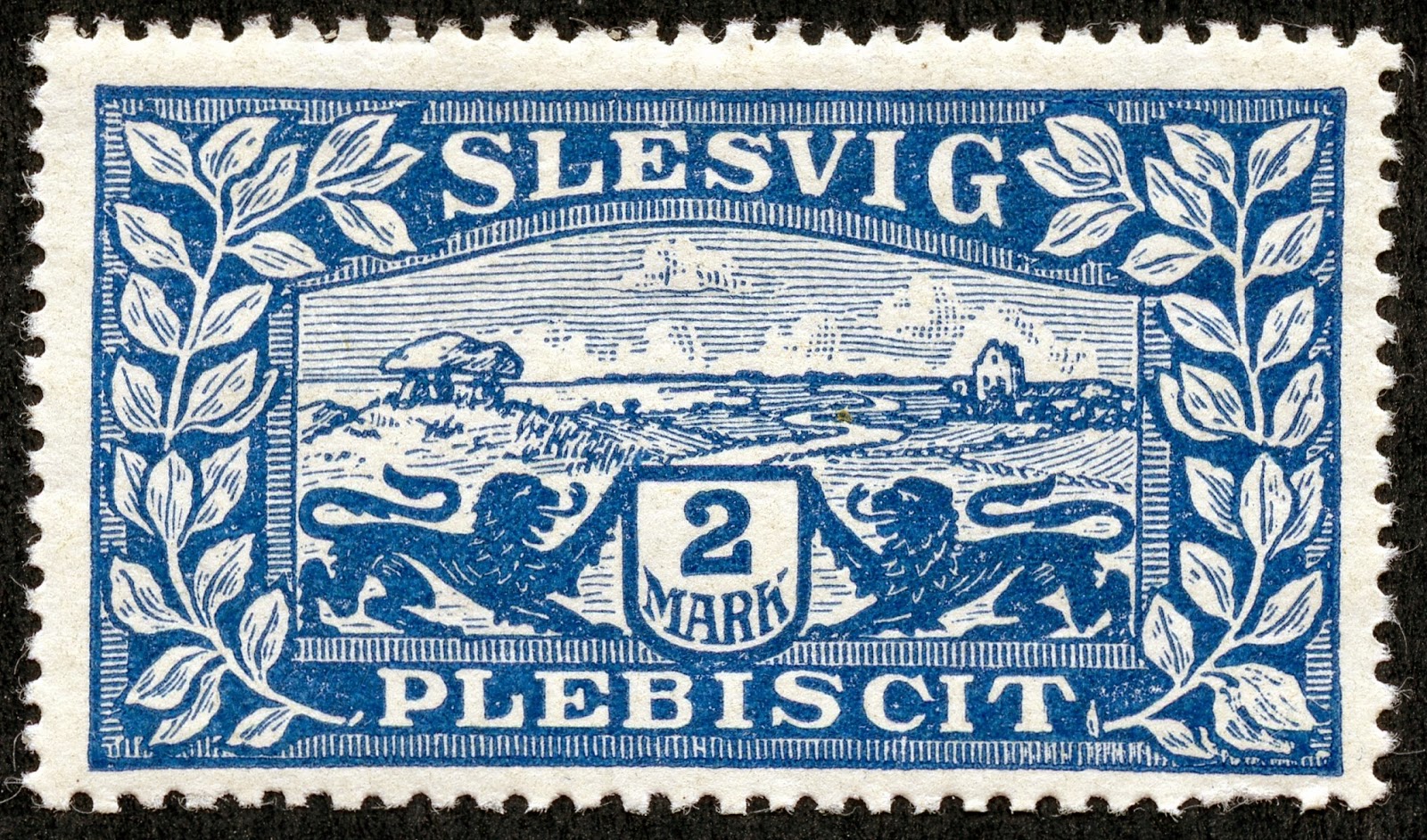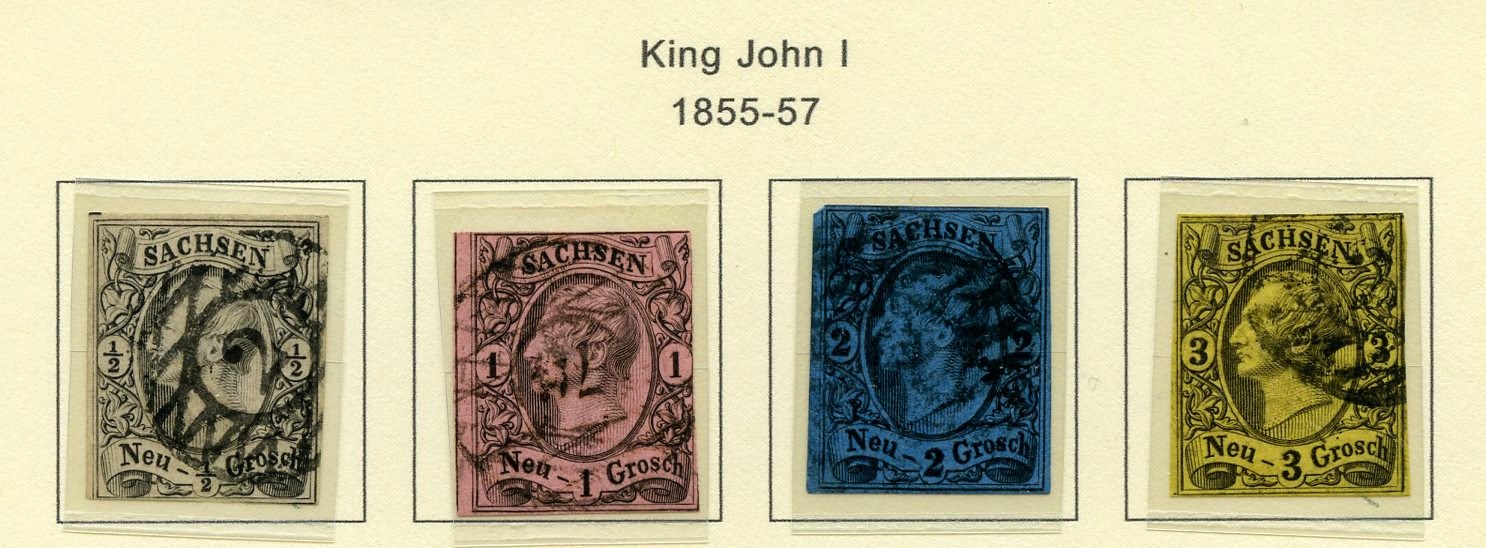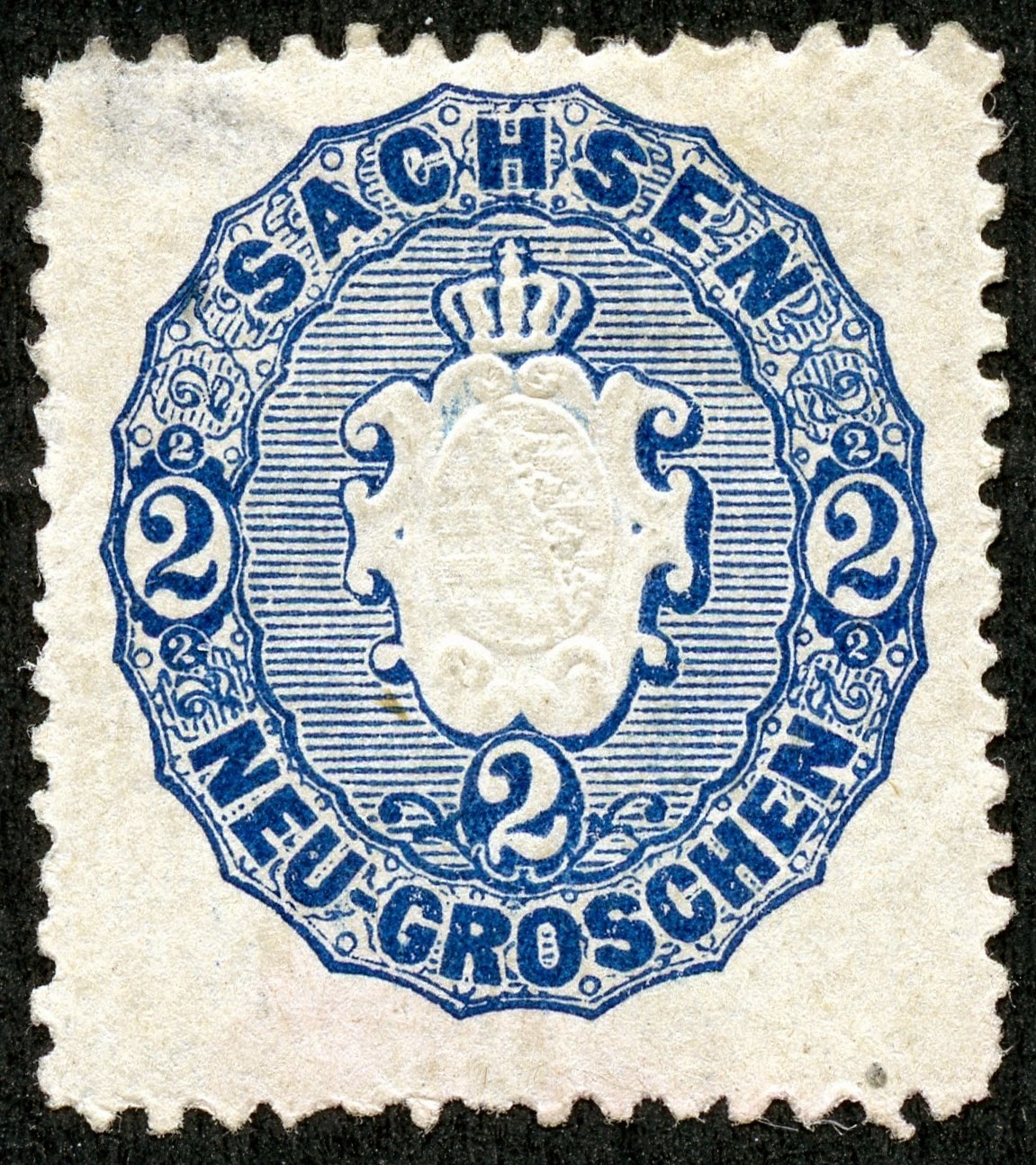Holstein 1864 Scott 18 1 1/4s blue & rose
Quick HistoryThe Duchies of Schleswig and Holstein were located between Denmark and Germany on the southern Jutland peninsula. The area served as an important transfer point for goods and materials between the North Sea and the Baltic Sea.
As one can imagine, there developed conflict between the two nations over "ownership" of the lands.
The Jutland Peninsula
Holstein (yellow); Schleswig (brown & red)
(This map additionally shows the 1920 Plebiscite results for Schleswig)
Both the Duchies of Schleswig and Holstein were, for centuries, fiefdoms of the Danish Monarchy. They also came under the administration of Danish government officials.
But, in 1815, Holstein joined the German Confederation (1815-66), and hence the "Schleswig-Holstein Question" arose about the tangled relationship.
In 1850, Holstein introduced a two stamp issue.
Danish Troops return to Copenhagen, 1849 - by Otto Bache
First War of Schleswig
Meanwhile, Denmark and Prussia fought the "First War of Schleswig" between 1848-1851, and, surprisingly, Denmark was victorious. Consequently, Stamps of Denmark were used in the lands between 1851-1863.
Boundary changes after the Second Schleswig War
Treaty of Vienna October 30, 1864
But the friction between Danish and German nationalism continued to grow, which lead to the 1864 "Second Schleswig War" with Denmark vs Prussia and Austria as combatants. Defeated, Denmark gave up control of the Schleswig and Holstein Duchies.
According to the Treaty of Vienna, Prussia would administer Schleswig, while Austria would administer Holstein.
Stamps were issued for Schleswig (1864-1867), Holstein (1864-1866), and Schleswig-Holstein (1865).
But conflicts arose between Prussia and Austria, leading to the 1866 Austro-Prussian War. Prussia was the victor, and all of Schleswig-Holstein was annexed into the North German Confederation (under heavy Prussian leadership) on January 1, 1868.
With the North German Confederation stamp issues, production of Schleswig-Holstein stamps ceased.
The Danish/German conflict did not end there, of course. My prior post covered the Schleswig Plebiscite of 1920 (after WW I), in which the northern section of Schleswig reverted to Denmark. The border changes between Denmark and Germany remain the same today.
For a look at all the philatelic and historical changes to Schleswig-Holstein in diagram form, check out the fine Stamp World History website.
For a look at all the philatelic and historical changes to Schleswig-Holstein in diagram form, check out the fine Stamp World History website.
Schleswig 1865 Scott 10 1/2s green
Into the Deep BlueThe 2014 Scott Classic Specialized 1840-1940 catalogue has, for 1850-1866 Schleswig-Holstein, 25 major descriptive numbers. Of those, the least expensive are two @ CV $10+ and five @ CV $20+. Clearly, Schleswig-Holstein stamps are costly, but a representative selection should be possible for the WW collector.
The 1850 "Coat of Arms" stamps for Holstein are quite expensive @ CV $300+-$500+ unused, and it is unlikely that a general WW collector will have them (I don't ;-), so I will say no more about them.
A closer look at the stamps and issues
16 Schillings = 1 Mark
Schleswig-Holstein 1865 Scott 4 1 1/4s green
The Schleswig-Holstein typographic issues tend to be rather functional in appearance with a large numeral in the center.
The "Schleswig-Holstein" labeled issue was produced in 1865, and had five denomination stamps. It is rouletted 11 1/2. CV is $10+-$60+, and is less expensive unused.
The "Schleswig-Holstein" labeled issue was produced in 1865, and had five denomination stamps. It is rouletted 11 1/2. CV is $10+-$60+, and is less expensive unused.
Schleswig 1865 Scott 11 1 1/4s red lilac
In 1864 and 1865, seven stamps were released for Schleswig with a similar design. These are also rouletted. The CV varies from $20+-$30+.
Note "Herzogth"? Herzogth is an abbreviation of the German "Herzogthum" meaning "duchy".
Note "Herzogth"? Herzogth is an abbreviation of the German "Herzogthum" meaning "duchy".
Holstein 1865 Scott 20 1 1/4s
Holstein had an 1864 imperforate lithographic square shaped blue & gray 1 1/4s stamp issued that has three types of lettering: hence has three major Scott numbers. I don't have any to show, but the CV for two types is $40+-$50+.
I can show (heading the post blog) the 1864 Scott 18 1 1/4s blue & rose square shaped stamp.
Shown here (above) is the more typical design for Holstein issued in 1865 on three stamps. CV is $40+-$60+.
Of note regarding the Scott 20 1 1/4s stamp above: it appears to be a brown color, but Scott has the color listed as "red lilac". ?? (chemical changeling?)
I can show (heading the post blog) the 1864 Scott 18 1 1/4s blue & rose square shaped stamp.
Shown here (above) is the more typical design for Holstein issued in 1865 on three stamps. CV is $40+-$60+.
Of note regarding the Scott 20 1 1/4s stamp above: it appears to be a brown color, but Scott has the color listed as "red lilac". ?? (chemical changeling?)
Holstein 1865 Scott 23 1 1/3s carmine
In 1865-66, Holstein additionally had a four stamp issue that was quite similar in appearance to the Schleswig 1865 stamps. The Holstein rouletted stamps had two designs: Note here the "duchy" word ("Herzogthum") is not abbreviated. ;-)
These "duchy" issues for Schleswig-Holstein were replaced by those of the North German Confederation on January 1, 1868.
These "duchy" issues for Schleswig-Holstein were replaced by those of the North German Confederation on January 1, 1868.
Deep Blue
Holstein 1864-66 Issues in Deep Blue
Deep Blue (Steiner) has two pages for the stamps of Schleswig-Holstein. All of the major Scott numbers have a space.
Schleswig-Holstein in the Minkus Supreme
Big Blue
I wasn't planning to have a blog post about Schleswig-Holstein, because the Duchies have never been given a space in any edition of Big Blue. (True, the Schleswig plebiscite stamps have spaces, but that was after the duchy era.)
But I've made exceptions before (Annam & Tonkin), and there is no reason that the Duchies should not have been included in BB - their stamps are no more expensive than other German States.
Instead, I am showing here what the Minkus Supreme Global 1840-1952 pages offers: Three spaces- two blank & one illustrating 1865 Scott 3 @ CV $30+.
The Supreme coverage is brutally efficient and brief: for all the German States, two pages are provided with many blank spaces to use. BB does provide more elegant coverage of the German States, but that is a moot point for Schleswig-Holstein. ;-)
Holstein 1866 Scott 22 1 1/4s red lilac
Out of the Blue
It is unclear why BB never included the Schleswig-Holstein duchies stamps. Certainly, they are as deserving as the other German States that were given a space in the 1940s editions. (But as we know, many of the German States then lost their spaces in the '69 edition.)
Note: Maps and Otto Brache painting image appear to be in the public domain.
Comments appreciated!

















































